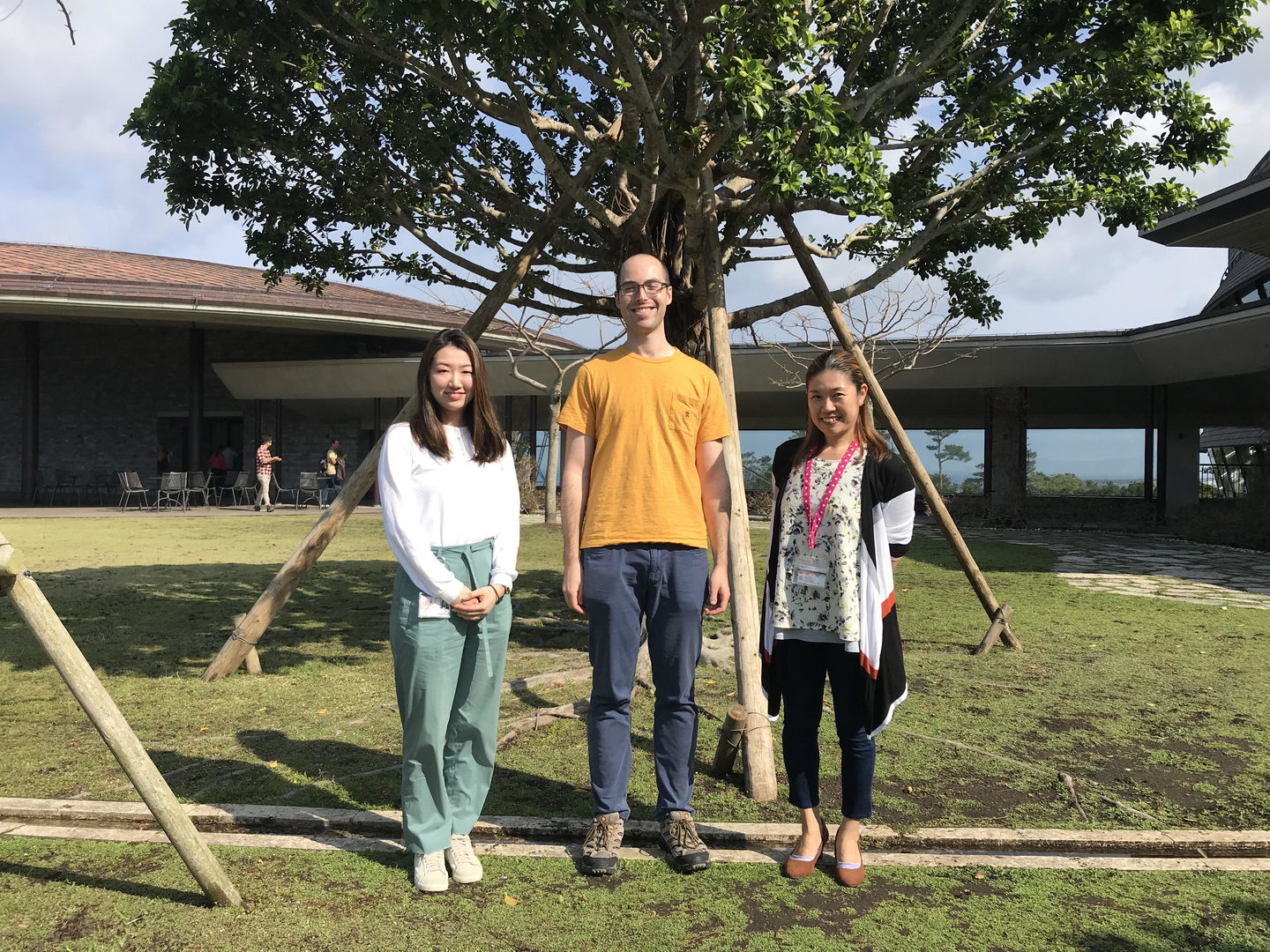FY2019 Annual Report
Computational Neuroethology Unit
Assistant Professor Sam Reiter

Abstract
The Computational Neuroethology Unit seeks to uncover the principles governing animal behavior and its neural basis. To achieve this goal, the unit combines novel methods for high-resolution behavioral recording with systems neuroscience and computational approaches. The unit currently focuses on coleoid cephalopods (cuttlefish, octopus, and squid), a group of marine invertebrates that evolved uniquely large brains and complex behaviors.
1. Staff
- Dr. Sam Reiter, Group Leader
- Ms. Rika Nakamura, Technical Staff
- Ms. Shoko Yamakawa, Administrative Assistant
2. Collaborations
2.1 Squid social behavior
- Description: Decoding the language of social cephalopods.
- Type of collaboration: Joint research
- Researchers:
- Professor Greg Stephens, Vrije Universiteit Amsterdam/OIST
- Dr. Makoto Hiroi, Tokyo University
2.2 Octopus Cognition
- Description: Testing octopus on complex cognitive tasks
- Type of collaboration: Joint research
- Researchers:
- Professor Tom Froese, OIST
- Ms. Aditi Pophale, OIST
2.3 Cuttlefish Camouflage in the field
- Description: Describing natural image statistics underwater, and how cuttlefish match them
- Type of collaboration: Joint research
- Researchers:
- Professor Stephanie Palmer, University of Chicago
- Mr. Amar Risbud, University of Chicago
3. Activities and Findings
The unit was established in October 2019. We have largely been setting up shop, building experimental equipment, establishing collaborations, recruiting, and beginning to collect preliminary results. A major effort has been in establishing Sepia pharaonis as a viable model for neuroscientific research. This has been proceeding extremely well, with the first generation of lab-born animals mating and producing a second generation in-house. The ability to house and breed these fascinating animals opens up many avenues of research which we plan on pursuing in FY2020.
4. Publications
4.1 Journals
- Reiter S, Laurent G Visual Perception and Cuttlefish Camouflage, Current Opinion in Neurobiology, 2020(60):47-54., doi: https://doi.org/10.1016/j.conb.2019.10.010. (2019).
- Norimoto H, Fenk L, Li HH, Tosches M, Gallego-Flores T, Hain D, Reiter S, Kobayashi R, Macias A, Klinkmann M, Laurent G A claustrum in reptiles and its role in slow-wave sleep, Nature 578(7795):413-418. doi: 10.1038/s41586-020-1993-6578(7795):413-418. (2020).
4.2 Books and other one-time publications
Nothing to report
4.3 Oral and Poster Presentations
- Reiter S, Visual Perception and Cuttlefish Camouflage, Tokyo University Medical School, Tokyo, Japan, (Oct 2019).
- Reiter S, Visual Perception and Cuttlefish Camouflage, OIST Marine Science Day, Okinawa, Japan, (Oct 2019).
- Reiter S, Computational Neuroethology Unit, OIST graduate student seminar, Okinawa, Japan, (Feb 2020).
5. Intellectual Property Rights and Other Specific Achievements
Nothing to report
6. Meetings and Events
6.1 Seminar: Data-Driven Systems Neuroscience by CUBIC-Cloud
- Date: Oct 28, 2019
- Venue: OIST Campus Lab1
- Speaker: Mr. Tomoyuki Mano (University of Tokyo, Japan)
6.2 Seminar: Physiological roles of subpopulations of gamma Kenyon cells during memory formation
- Date: Nov 4, 2019
- Venue: OIST Campus Lab2
- Speaker: Dr. Kazumichi Shimizu (University of Tokyo, Japan)
6.3 Seminar: Analysis of state-dependent odor response in compartmentalized Drosophila mushroom body γ neurons
- Date: Feb 17, 2020
- Venue: OIST Campus Lab2
- Speaker: Dr. Makoto Hiroi (University of Tokyo, Japan)
7. Other
Nothing to report.



